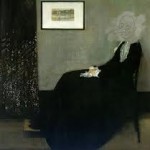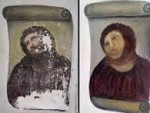 This is the second time we’ve seen this, so we’ll go ahead and call it a trend. Modern digital artists are revisiting the canvases of painters departed, lending dimensionality to their works. When last we checked in Picasso’s haunting “Guernica” was exploding in CGI; now we’re invited to explore like never before the depths and personalities of Gyula Benczúr‘s 1896 oil, Budavár Repossession. Behold the virtual interpretation of Hungarian graphic artist Zsolt Ekho Farkas:
This is the second time we’ve seen this, so we’ll go ahead and call it a trend. Modern digital artists are revisiting the canvases of painters departed, lending dimensionality to their works. When last we checked in Picasso’s haunting “Guernica” was exploding in CGI; now we’re invited to explore like never before the depths and personalities of Gyula Benczúr‘s 1896 oil, Budavár Repossession. Behold the virtual interpretation of Hungarian graphic artist Zsolt Ekho Farkas:
Results may vary. Some of us might reasonably label this vandalism, or at least unearned appropriation. We might say that the work was completed in 1896, when the artist lowered his brush. A twenty-first century add-on isn’t welcome and doesn’t belong.
might say that the work was completed in 1896, when the artist lowered his brush. A twenty-first century add-on isn’t welcome and doesn’t belong.
Or we might be little more tolerant, and give Farkas et.al. a bit more benefit of doubt. Maybe he’s not appropriating Benczúr’s work; maybe he’s just giving us all a new tool for exploring it.
I’m in the latter camp, if only because that’s what I’d like to believe. Also, let’s not deny it, 3D art is just mind-blowingly cool.
 I’m genuinely interested in both points of view, though. So where do you stand? Is 3D reinterpretation an assault on cultural history? Or is it a legitimate application that can lead to a new species of art appreciation?
I’m genuinely interested in both points of view, though. So where do you stand? Is 3D reinterpretation an assault on cultural history? Or is it a legitimate application that can lead to a new species of art appreciation?
All viewpoints are welcome and equally respected. Log in or drop us a line, and let us know what you think.